Each time a new analysis of mobile network performance gets published, it’s almost a given that we’ll see T-Mobile leading the pack in terms of delivering the fastest 5G speeds. After all, the “Un-carrier” had a massive lead in deploying its 5G networks — and it hasn’t been resting on its laurels.
However, its competitors haven’t been sitting still either. While Verizon may have been starting from behind, it’s been aggressively deploying the faster 5G spectrum that gave it a nice leap in 5G performance last year. Still, Verizon and AT&T are lagging quite a bit in overall mobile network performance, and AT&T has fallen even farther behind when it comes to delivering the best 5G speeds across the nation.
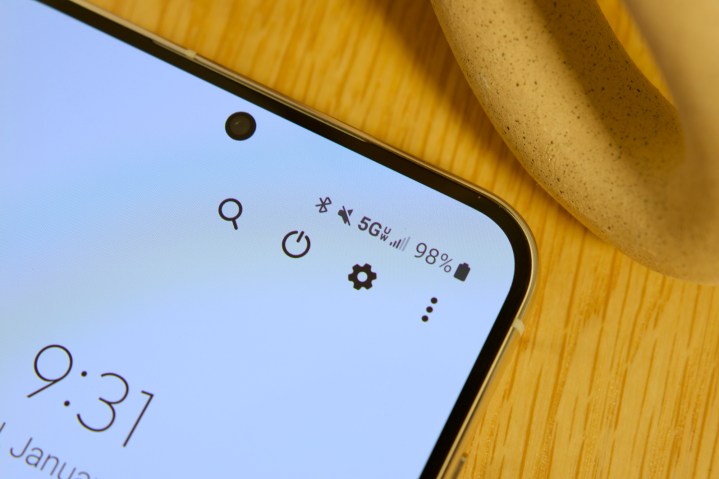
What’s even more unusual is that the 5G performance needle has barely moved for any of the big three carriers over the last quarter, suggesting that we may be sitting on a 5G plateau at the moment.
T-Mobile is sitting pretty
According to Ookla’s latest market research, T-Mobile continues to leave its rivals in the dust in the race for median 5G download speeds, clocking in at 220.7Mbps compared to Verizon’s 132.72Mbps and AT&T’s 86.46Mbps. However, each carrier saw only modest increases over January’s numbers.
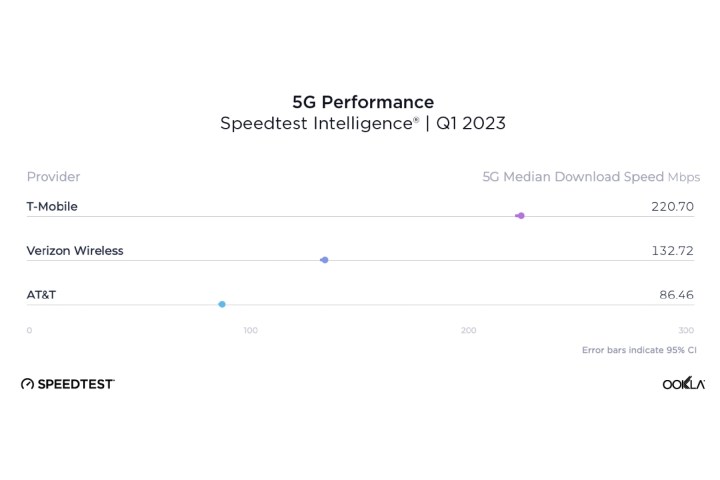
Verizon led the way in growth this time around, with a 3.7% increase in 5G download speeds, compared to T-Mobile’s 1.9% and AT&T’s 1.25% increases. Still, that’s not saying much compared to the 12% gains that T-Mobile reported in the second half of 2022 when its median 5G download speeds broke the 200Mbps barrier for the first time.
When it came to overall download speeds across both 4G/LTE and 5G networks, all three carriers did slightly better, with T-Mobile’s score increasing to 165.22Mbps from 151.37Mbps in January, and Verizon and AT&T coming in at 75.4Mbps and 68.2Mbps, respectively. That’s about a 9% increase for T-Mobile and Verizon and a 4% increase for AT&T.
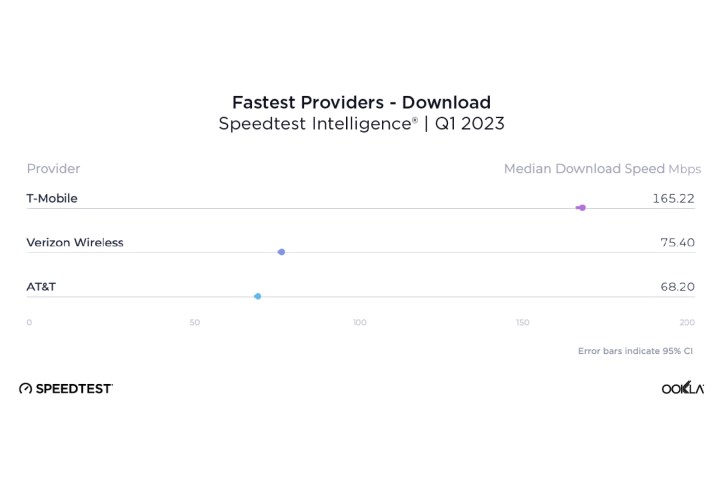
A 5G expansion phase
These latest numbers seem to indicate that all three carriers have slowed down their midband 5G rollouts for the time being to focus more on bringing 5G coverage to previously unserved areas.
During 2022, Verizon and T-Mobile expanded their 5G Ultra Wideband and 5G Ultra Capacity networks to bring midband 5G coverage to areas that had previously only been able to use much slower lowband 5G. This resulted in noticeable increases in 5G download speeds each quarter as more 5G customers could take advantage of the faster performance offered by the higher 5G frequencies.

The data from Ookla’s latest report suggests that all three carriers have shifted to expanding their 5G networks into areas where only 4G/LTE signals were available before. There’s little room — and no motivation — for carriers to improve their legacy 4G/LTE networks. Hence, the only way for overall median download speeds to increase is to get more customers away from those older networks and onto newer and faster 5G networks.
As of March 2023, Verizon’s 5G Ultra Wideband network reaches 200 million people, and T-Mobile’s 5G Ultra Capacity network boasts coverage of 260 million people, with plans to hit 300 million by the end of this year. Midband and C-band coverage is quickly reaching saturation among existing 5G networks for those two carriers. This means we may continue to see only relatively modest improvements to their 5G speeds until more advanced 5G technologies become mainstream.
However, as their older 4G/LTE networks are superseded by 5G coverage and more customers upgrade to 5G-capable phones, the overall median download speeds will move closer to the 5G median download speeds for each carrier — and that’s likely where most of the room for growth is now.
AT&T may turn out to be a dark horse in this race as it’s sitting on midband spectrum that it has yet to deploy beyond a handful of cities. This more conservative approach has been holding AT&T’s numbers back, but it’s fair to say we’ll see some significant gains once its C-band rollouts begin in earnest and bring its 5G Plus network to more of its customers.
The numbers by state
Before you rush out and switch carriers, it’s important to remember that this performance report measures median download speeds across the entire country. While the odds are good that T-Mobile can deliver the best 5G performance, that’s by no means guaranteed.
Thankfully, Ookla’s report provides a state-by-state breakdown of regional speeds to help you determine what these numbers will look like where you live and work.
T-Mobile continues to hold the lead in 46 states and the District of Columbia. Minnesota remains at the top of the list, where overall median download speeds saw an 11% increase from 100.83Mbps to 111.67Mbps. This was likely driven mainly through 5G expansion in the area by T-Mobile, with that provider’s median download speeds jumping from 162.56Mbps last quarter to 177.14Mbps this time.
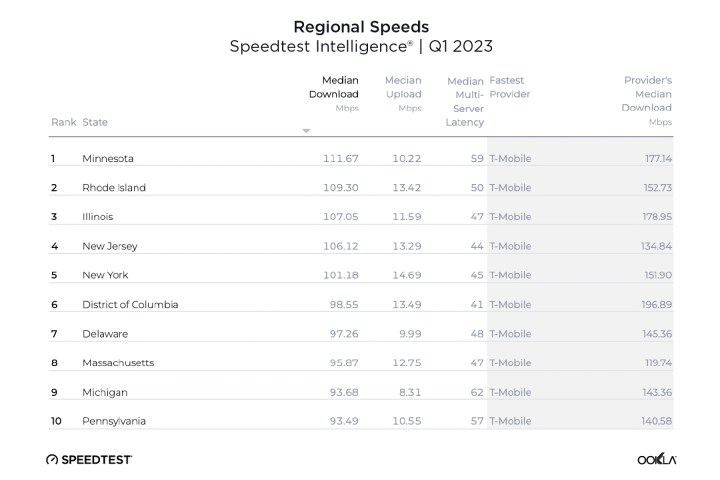
Rhode Island jumped from seventh place in January to take the number two spot in the latest report, with overall speeds increasing by 17% to 109.3Mbps. T-Mobile subscribers in that state saw a 26% boost, from 120.84Mbps to 152.73Mbps. This bumped Illinois and New Jersey down to third and fourth place, respectively. while New York edged out the District of Columbia for fifth place, breaking the 100Mbps barrier for the first time.
Notably, even though the District of Columbia dropped to sixth place, it remains the third-fastest region for T-Mobile customers, with median download speeds of 196.89Mbps — a formidable 25% increase from its previous score of 156.72Mbps.
Kansas and Ohio remained the fastest states for T-Mobile, crossing the 200Mbps line to hit 208.45Mbps and 202.07Mbps, respectively. T-Mobile also saw gains in Ohio, Indiana, and Oregon — all of which surpassed third-place-runner-up Illinois from January.
AT&T dropped off the list of contenders entirely this time, losing its lead in Montana and Vermont to what is effectively a tie; both these states were deemed too close to call, along with West Virginia, where regional carrier FirstNet had previously led.
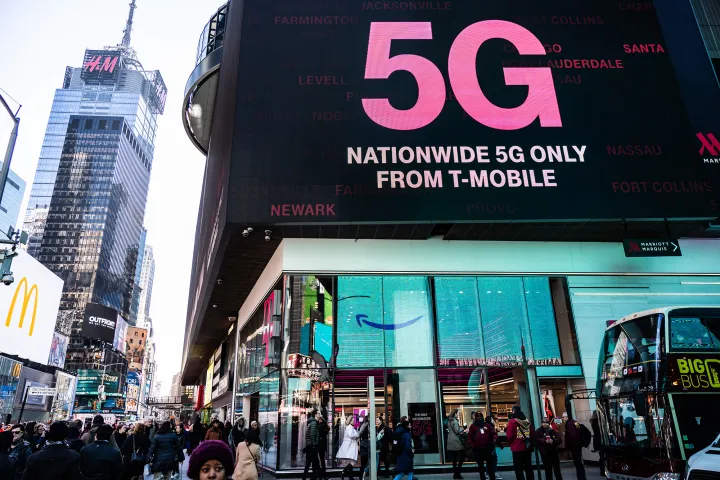
Alaska was the only state with a clear winner that wasn’t T-Mobile, as regional carrier GCI took back its crown after having been tied in the last report. T-Mobile also flipped South Dakota in the latest report, delivering speeds of 102.01Mbps compared to the state’s overall median of 62.62Mbps.
On the other end of the spectrum, Mississippi remained at the bottom of the list with the slowest median download speed of 36.65Mbps — only slightly improving from 34.05Mbps in the last report. Notably, however, T-Mobile customers in Mississippi saw download speeds over three times the median, at 114.91Mbps. This was followed in ascending order by Alaska, Wyoming, New Mexico, and Vermont, all of which saw similarly modest increases except for New Mexico, where speeds jumped by 23% to 48Mbps.
For individual cities, Glendale, Arizona, blew past January’s winner, St. Paul, Minnesota, with overall median download speeds of 176.79Mbps and an impressive 239.3Mbps among T-Mobile customers. Kansas City, Missouri, and Scottsdale, Arizona, also moved into the top five, displacing Columbus, Ohio, which dropped to sixth place, and Arlington, Texas, and Pittsburg, Pennsylvania, which fell to the 18th and 19th slots, respectively.
T-Mobile was the fastest mobile operator in 88 of the top 100 cities this time around, exceeding median download speeds of 300Mbps in its three cities in North Carolina: Greensboro (354.29Mbps), Winston-Salem (349.06Mbps), and Raleigh (304.29Mbps). Verizon Wireless offered the fastest speeds in El Paso, Texas.
Editors' Recommendations
- Visible’s affordable 5G plans just got even cheaper
- Does the Moto G Power have NFC?
- Does the Moto G Stylus have NFC?
- Have T-Mobile? Your 5G service is about to get much faster
- Your next phone could get a huge 5G upgrade, thanks to AI




